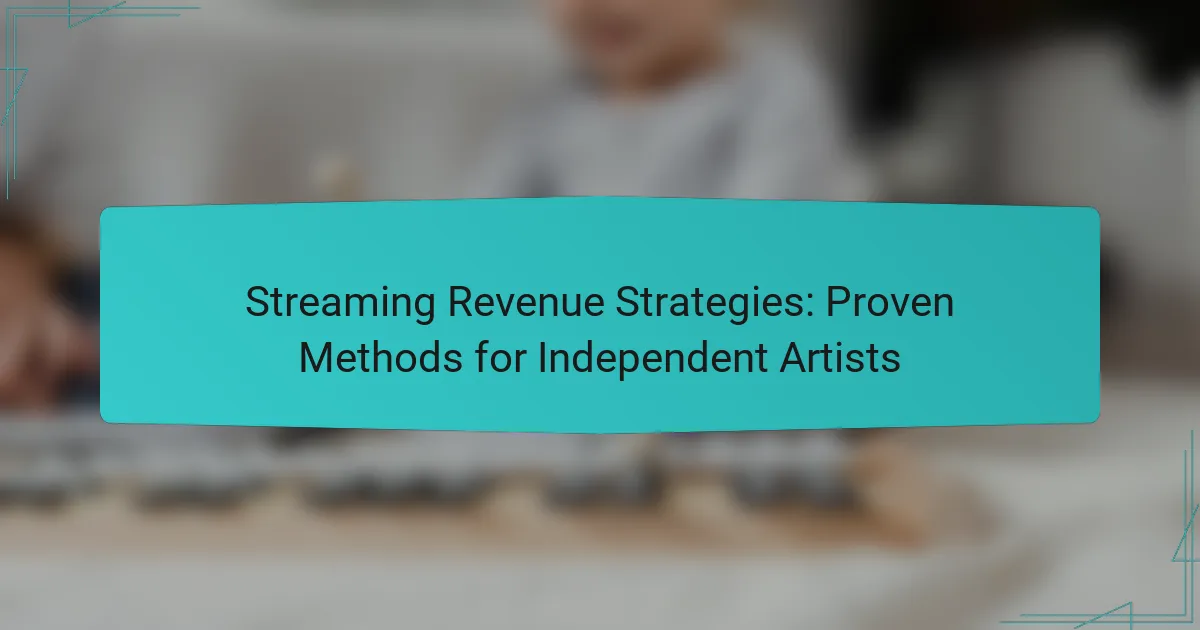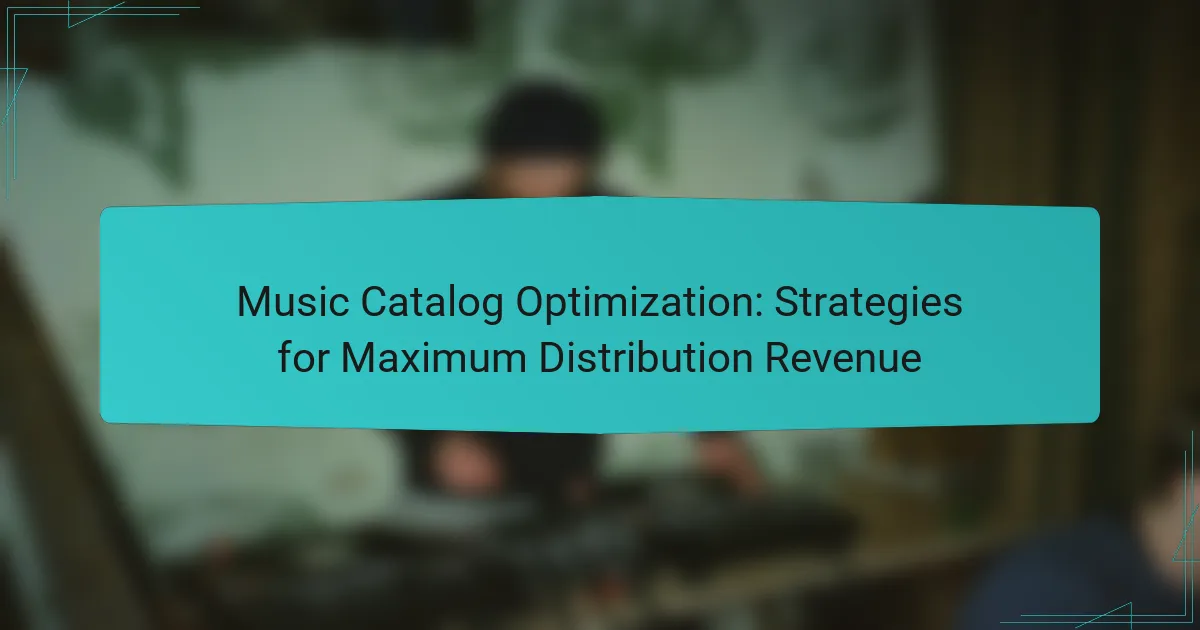Independent artists have a unique opportunity to maximize their streaming revenue by strategically leveraging various digital platforms. By optimizing their profiles, promoting their music effectively, and engaging with fans, they can significantly enhance their earnings. Understanding the complexities of streaming royalties and implementing effective marketing strategies are essential steps in boosting visibility and revenue in today’s competitive music landscape.
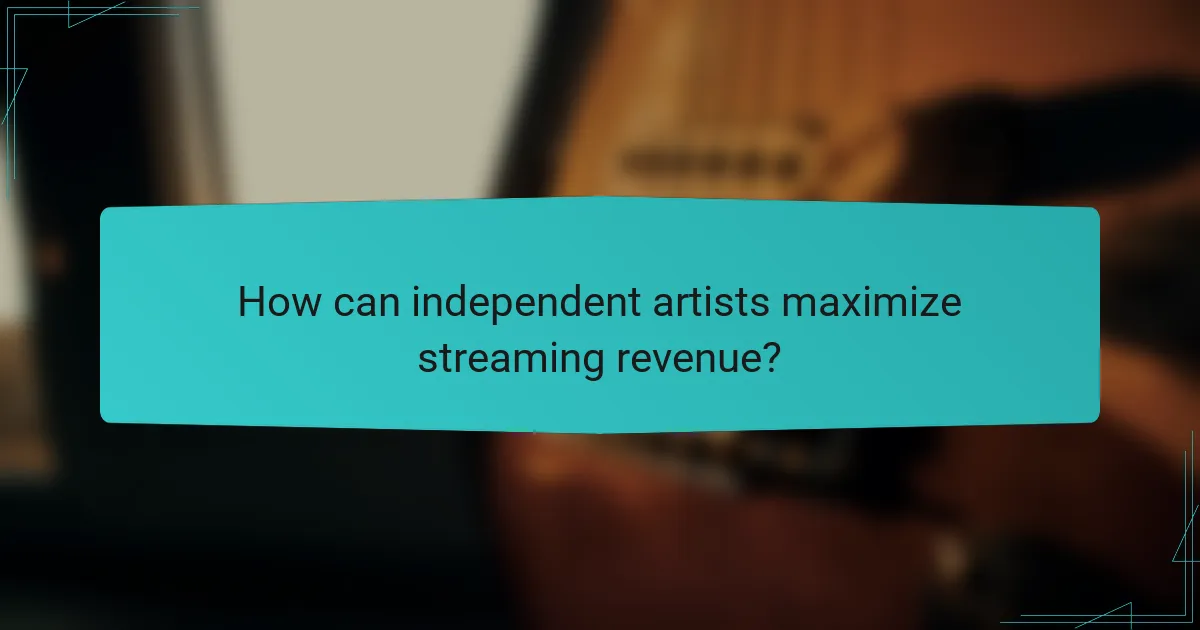
How can independent artists maximize streaming revenue?
Independent artists can maximize streaming revenue by strategically using various platforms to reach audiences and engage fans. Focusing on optimizing profiles, promoting music effectively, and leveraging fan interactions can significantly boost earnings.
Utilizing Spotify for Artists
Spotify for Artists allows musicians to manage their profiles, track performance, and understand listener demographics. Artists should regularly update their profiles with new releases, engaging bios, and high-quality images to attract listeners.
Utilizing Spotify’s promotional tools, such as Canvas and Spotify Ad Studio, can enhance visibility. Additionally, submitting tracks to Spotify’s editorial playlists can lead to increased streams, which directly impacts revenue.
Leveraging Apple Music for distribution
Apple Music offers independent artists a platform to distribute their music while providing insights into listener engagement. Artists should ensure their music is available on Apple Music through reputable distributors to maximize reach.
Engaging with Apple Music’s curated playlists can also enhance exposure. Artists can submit their tracks for consideration and promote their music through social media to drive traffic to their Apple Music profiles.
Engaging with fans on Bandcamp
Bandcamp allows independent artists to sell music directly to fans, often resulting in higher revenue per sale compared to streaming platforms. Artists can set their own prices and offer exclusive content, such as merchandise or special editions, to encourage purchases.
Building a loyal fanbase on Bandcamp involves regular updates and direct communication. Artists should utilize Bandcamp’s features, like fan subscriptions, to create ongoing revenue streams and foster community engagement.
Implementing YouTube monetization strategies
YouTube offers various monetization options for independent artists, including ad revenue, channel memberships, and merchandise shelf integration. Artists should create engaging video content, such as music videos or behind-the-scenes footage, to attract viewers and subscribers.
To maximize earnings, artists should apply for the YouTube Partner Program once they meet the eligibility criteria. Promoting their YouTube channel through social media and collaborating with other creators can further increase visibility and revenue potential.
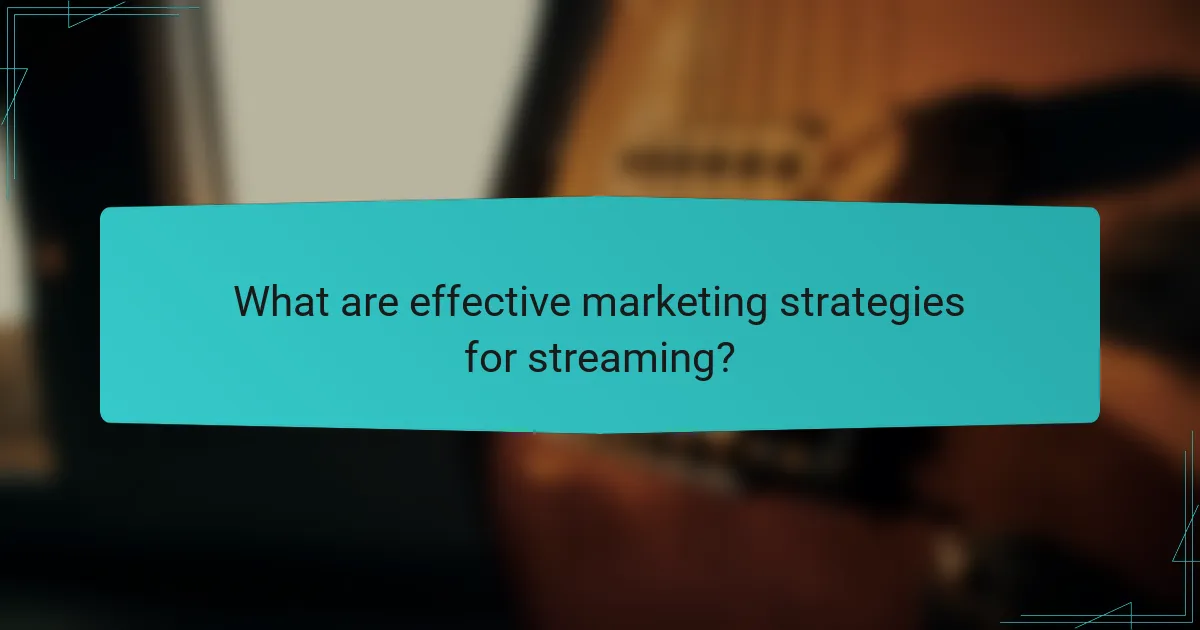
What are effective marketing strategies for streaming?
Effective marketing strategies for streaming involve leveraging various digital platforms to reach and engage audiences. Independent artists can utilize social media, email marketing, and influencer collaborations to boost their visibility and increase streaming revenue.
Social media promotion techniques
Social media platforms like Instagram, TikTok, and Twitter are essential for promoting streaming content. Artists should create engaging posts that showcase their music, behind-the-scenes content, and personal stories to connect with fans. Regularly interacting with followers through comments and live sessions can also enhance engagement.
Utilizing targeted ads on these platforms can help reach specific demographics, increasing the chances of attracting new listeners. Artists should consider allocating a budget for ads, focusing on platforms where their target audience is most active.
Email marketing campaigns
Email marketing remains a powerful tool for independent artists to communicate directly with their audience. Building an email list through website sign-ups and social media can provide a dedicated channel for sharing new releases, upcoming shows, and exclusive content.
Artists should craft compelling newsletters that include links to their streaming platforms, encouraging fans to listen and share. Regular updates, ideally monthly, keep the audience engaged without overwhelming them.
Collaborating with influencers
Collaborating with influencers can significantly expand an artist’s reach. By partnering with social media influencers who align with their brand, artists can tap into new audiences that may be interested in their music. It’s essential to choose influencers whose followers match the artist’s target demographic.
Artists should approach influencers with a clear proposal, offering something of value in return, such as exclusive content or merchandise. This mutual benefit can lead to authentic promotion and increased streaming numbers.
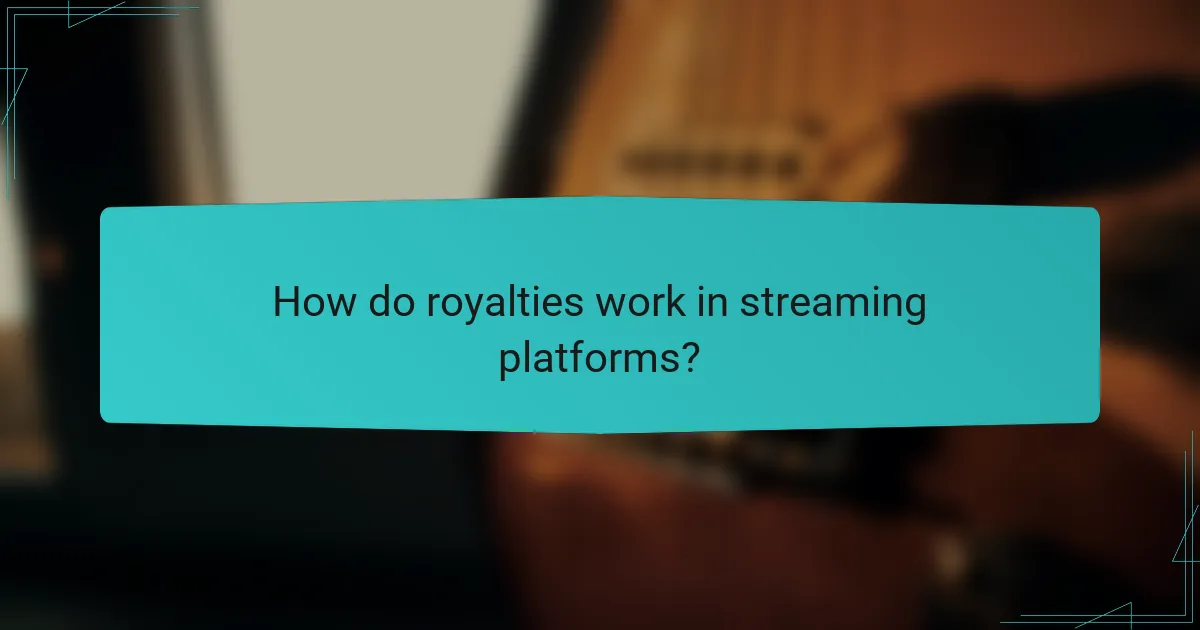
How do royalties work in streaming platforms?
Royalties from streaming platforms are payments made to artists based on the number of times their music is played. These payments are typically calculated using a complex formula that takes into account various factors, including the platform’s subscription model and the artist’s contract terms.
Understanding streaming payouts
Streaming payouts are generally calculated per stream, but the exact amount can vary significantly between platforms. For example, major services like Spotify or Apple Music may pay artists anywhere from a fraction of a cent to a few cents per stream. Independent artists often find that their earnings can be quite low, especially if they rely solely on these platforms for income.
Many platforms pool their revenue and distribute it based on the share of total streams an artist receives. This means that an artist’s payout can depend on the overall performance of their music compared to others on the platform, making it crucial to promote songs effectively to increase plays.
Factors affecting royalty rates
Several factors influence the royalty rates artists receive from streaming services. These include the type of subscription (free vs. paid), the geographical location of listeners, and the specific agreements artists have with their distributors or labels. For instance, artists may earn higher rates from paid subscriptions compared to free tiers, where ad revenue is the primary source of income.
Additionally, the market share of the streaming platform plays a role. Larger platforms with more subscribers can afford to pay higher royalties, while smaller services may offer lower rates. Artists should consider these factors when choosing which platforms to focus their efforts on for maximum revenue potential.
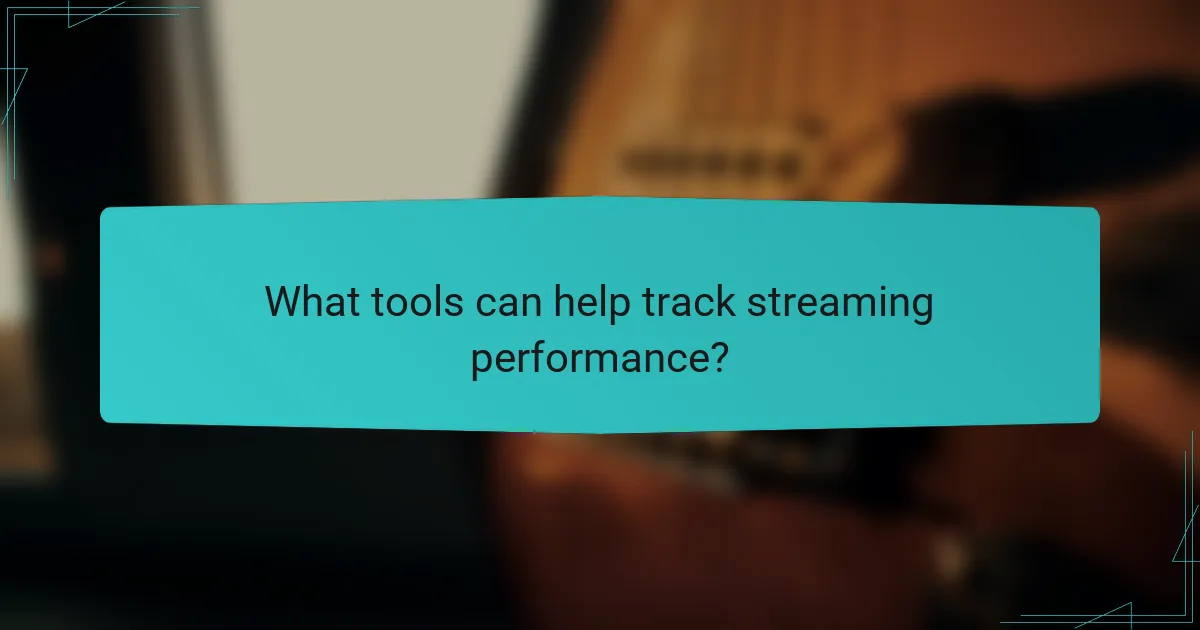
What tools can help track streaming performance?
Several tools are available to help independent artists track their streaming performance effectively. These platforms provide valuable analytics and insights that can inform marketing strategies and improve audience engagement.
Using Chartmetric for analytics
Chartmetric offers comprehensive analytics that allow artists to monitor their streaming performance across various platforms. By aggregating data from services like Spotify, Apple Music, and YouTube, it provides insights into listener demographics, geographic reach, and playlist placements.
Artists can utilize Chartmetric’s features to identify trends in their music’s performance, track changes over time, and compare their metrics against industry benchmarks. This can help in making informed decisions about promotional efforts and collaborations.
Employing Soundcharts for insights
Soundcharts is another powerful tool that specializes in real-time music analytics. It enables artists to track their songs’ performance on streaming platforms, radio, and social media, providing a holistic view of their reach and engagement.
With Soundcharts, independent artists can receive alerts about significant changes in their streaming numbers or social media mentions, allowing them to respond quickly to emerging trends. This proactive approach can enhance their marketing strategies and optimize fan engagement.
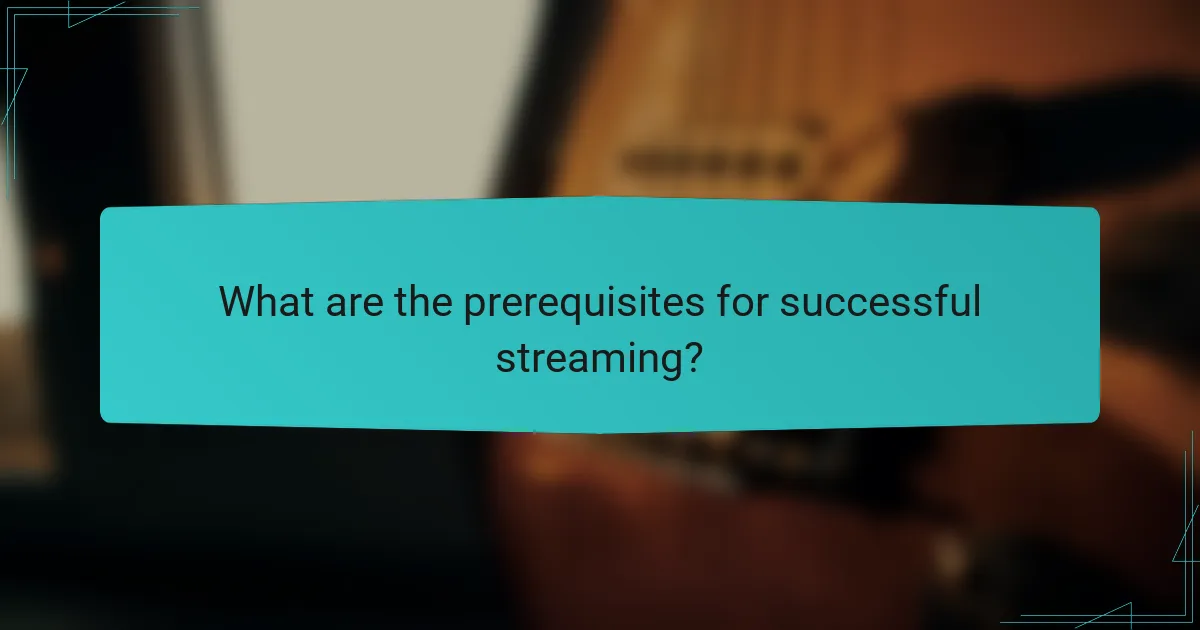
What are the prerequisites for successful streaming?
Successful streaming for independent artists requires a combination of a strong online presence and high-quality music content. These elements help artists connect with audiences and maximize their revenue potential through various streaming platforms.
Building a strong online presence
A robust online presence is essential for independent artists to reach and engage their audience. This includes maintaining active profiles on social media platforms, music streaming services, and personal websites. Regularly updating content and interacting with fans can significantly enhance visibility.
Utilize platforms like Instagram, TikTok, and YouTube to share behind-the-scenes content, music videos, and live performances. Consider using targeted ads to reach specific demographics, which can help grow your fan base. Engaging with followers through comments and messages fosters a loyal community.
Creating high-quality music content
High-quality music content is crucial for attracting listeners and retaining their interest. This involves investing in professional recording, mixing, and mastering services to ensure your music sounds polished and appealing. Aim for a consistent release schedule to keep your audience engaged.
Consider experimenting with different genres and styles to find what resonates with your audience. Collaborating with other artists can also introduce your music to new listeners. Remember to promote your releases through social media and email newsletters to maximize exposure and streaming numbers.
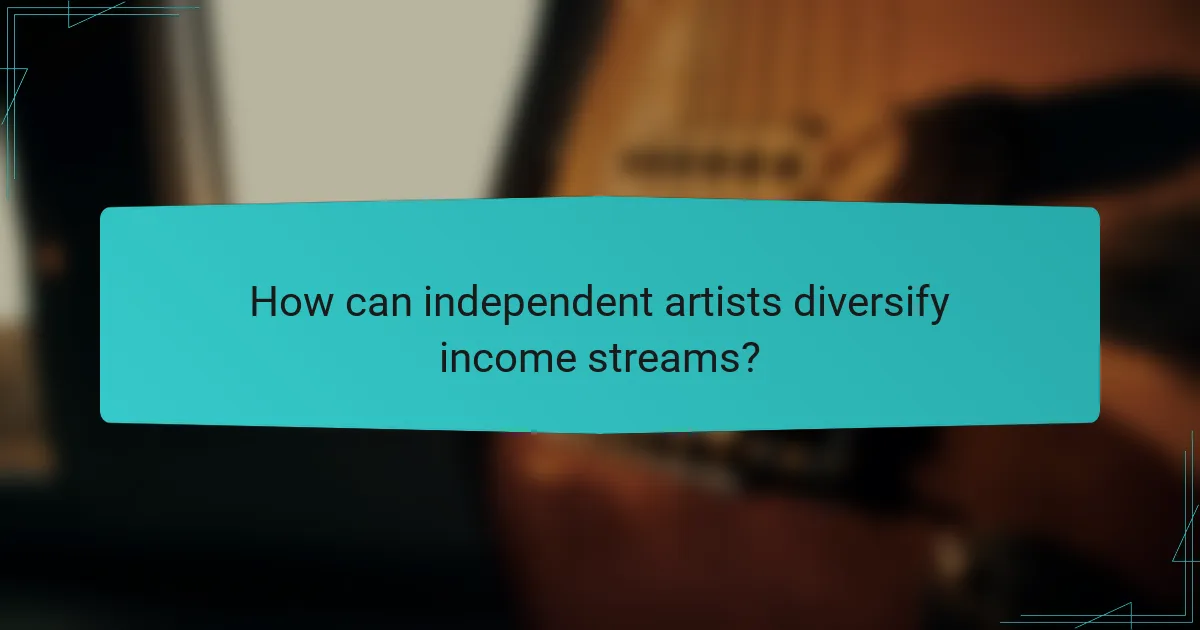
How can independent artists diversify income streams?
Independent artists can diversify their income streams by exploring various revenue-generating avenues beyond traditional music sales and streaming royalties. This includes merchandise sales, offering exclusive content, and leveraging fan engagement platforms.
Exploring merchandise sales
Merchandise sales provide a direct way for independent artists to generate income while promoting their brand. Popular items include t-shirts, hats, and posters, which can be sold at live shows or through online stores.
When considering merchandise, artists should focus on quality and design to attract buyers. Setting up an online shop using platforms like Shopify or Bandcamp can streamline sales. Additionally, bundling merchandise with music releases can increase overall sales.
Offering exclusive content on Patreon
Patreon allows artists to offer exclusive content directly to their fans in exchange for a subscription fee. This can include behind-the-scenes videos, early access to new music, or personalized messages, creating a more intimate connection with supporters.
To maximize success on Patreon, artists should clearly communicate the value of their offerings and regularly update content to keep subscribers engaged. Pricing tiers can also help cater to different fan budgets, typically ranging from a few dollars to over twenty per month.

What emerging trends are shaping streaming revenue?
Emerging trends in streaming revenue are significantly influenced by changes in consumer behavior, technology advancements, and evolving industry practices. Independent artists must adapt to these trends to maximize their earnings and reach wider audiences.
Increased focus on direct-to-fan platforms
Direct-to-fan platforms are gaining traction as artists seek to build closer relationships with their listeners. These platforms allow musicians to sell music, merchandise, and tickets directly, often resulting in higher profit margins compared to traditional streaming services.
Examples of popular direct-to-fan platforms include Bandcamp and Patreon, where artists can offer exclusive content and experiences. This model can lead to more sustainable income, particularly for independent artists who may struggle with lower payouts from major streaming services.
Utilization of data analytics
Data analytics is becoming essential for independent artists to understand their audience better and tailor their marketing strategies. By analyzing streaming data, artists can identify which songs resonate most with listeners and adjust their promotional efforts accordingly.
Many streaming platforms provide insights into listener demographics and engagement metrics. Artists can use this information to target specific markets and optimize their release strategies, potentially increasing their streaming revenue.
Collaboration and cross-promotion
Collaboration between artists is a growing trend that can enhance exposure and revenue. By partnering with other musicians, independent artists can tap into each other’s fan bases, leading to increased streams and sales.
Cross-promotion can take various forms, such as featuring on each other’s tracks, sharing social media content, or organizing joint live events. This strategy not only broadens reach but also fosters a sense of community within the independent music scene.
Emphasis on live streaming events
Live streaming events have surged in popularity, especially in the wake of global events that limited in-person gatherings. Independent artists can leverage platforms like Twitch or YouTube Live to host performances, engage with fans, and generate revenue through ticket sales and donations.
These events can serve as a powerful marketing tool, allowing artists to showcase new material and connect with audiences in real-time. Offering exclusive content during live streams can further incentivize fans to participate and support the artist financially.
